A to Z HIGHLIGHTS OF EAST STAFFORDSHIRE - PART 1

ABBOTS BROMLEY
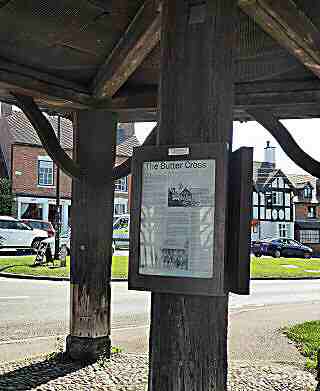
Abbots Bromley is one of the most attractive villages in Staffordshire. Most of it is included in a Conservation Area with over 40 buildings listed. Its history goes back to before the Norman Conquest and it was recorded as a settlement as early as 942. A first Market Charter was granted in 1221 for a weekly market and two-day annual fair. The charter was confirmed six years later when the annual fair was increased from two to three days.
During the Middle Ages, the village became an important stopping point for coaches travelling between Manchester and Birmingham. The market thrived and the inhabitants prospered, reflected in the number of fine buildings to be seen. The Butter Cross, which stands next to the village green is claimed to be the oldest building in Abbots Bromley. It is named after the products sold under its roof and now serves as a bus shelter and information point. Close by is The Crofts, formerly known as Bull Stake House in recognition that bull-baiting used to take place in front of the house.
Many of the old village traditions have died out and the winter curfew bell is no longer rung. One tradition that has survived is the annual Horn Dance, which has become internationally famous and attracts many visitors to the village, which is good news for the shops and public houses.
ABBOTS BROMLEY – HORN DANCE
The Horn Dance traditionally takes place on the Monday following the first Sunday after the fourth of September. The performers are a Hobby Horse, Maid Marian, a Jester, two boys, one with a crossbow and the other with a triangle, a musician with an accordion and six Horn Dancers. They meet at the parish church at 8.00 am and after performing the vicarage, they proceed through the village giving performances on the way to Blithfield Hall. After giving a presentation on the hall lawn they return to Abbots Bromley and continue to perform into the late evening.
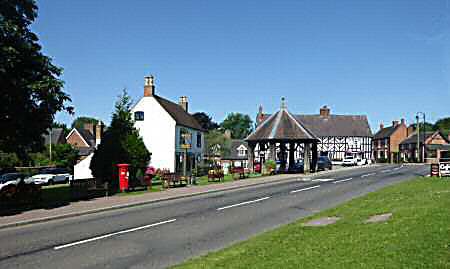
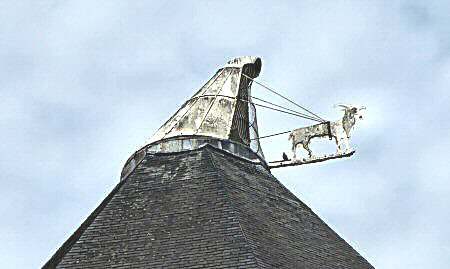
ANGLESEY – BURTON
A significant part of Anglesey, on the eastern side of Burton, is covered by the floodplain of the River Derwent. The central core of the parish is made up of late 19th and early 20th-century red-brick terraced housing. Mainly of a high density and usually associated with the breweries in the surrounding area. Many of them continue to employ residents who live in purpose-built workers’ cottages.

In June 1989, a conservation area was designated on Clarence Street/Anglesey Road in recognition of the special architectural features of the buildings within the area. The former brewery in Clarence Street, known as the Goat Maltings is a Grade II listed building. Locals identified it by the goat sculpture on top of the building. The building was damaged by a fire in 2019.
ANSLOW
Anslow is an attractive rural village on the western edge of the National Forest. Originally mainly a settlement of farmworkers and foresters, the situation changed in the late 19th century. When the brewery industry in Burton began to thrive men were lured away from the rural lifestyle they had previously enjoyed. Others were involved in brick-making in the late 19th and early 20th centuries.
The Bell Inn and the school are at the centre of the village. The Inn stands on the site of the old village bell, which was rung to signal danger or to call in the foresters working in the woods. The parish church at Anslow Gate was originally called Needwood Church but later dedicated to the Holy Trinity. Nearby at Church Farm, you will find tearooms, farm animals and a large children’s play area. A lovely place to visit.
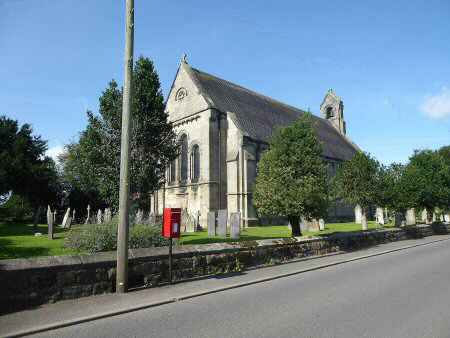
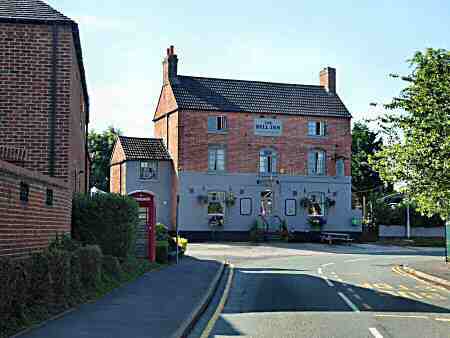
ADMASTON
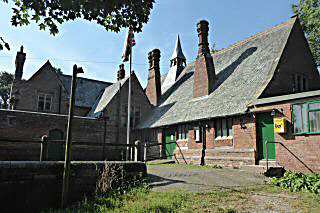
Admaston is a tiny village in the parish of Blithfield, surrounded by fields with the attractive wooded parkland of Blithfield Hall to the north. The only vehicles entering are for access only, which keeps it quiet and secluded. The impressive Blithfield House at the end of School Lane was formerly a school and schoolmaster’s house. It has been converted into the Village Hall and is Grade II listed. Several of the other cottages in the village are similarly listed.
BARTON-UNDER-NEEDWOOD
Barton-under-Needwood is a large pleasant village that has grown due to its strategic position. It lies on the line of the Old Roman Road, Rykneld Street which ran north from Lichfield to Burton. The village’s importance grew with the construction of the Trent and Mersey Canal and later the Birmingham to Sheffield railway line. Although the railway station closed the busy A38 provides commuters with good access to neighbouring towns and cities.
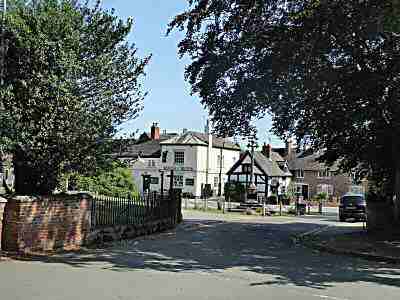
Despite several new housing developments, the village has retained much of its character. One of the main features is the number of large Victorian mansions which still survive, together with several Georgian and Regency houses. There are some Grade II listed buildings and three Grade II*.
Barton’s parish church is dedicated to St James and was built in the early 16th century. Dr John Taylor paid for its erection and his initials are carved on the tower wall. He was one of the triplets of a poor family but, under Royal patronage, he rose to power and wealth in government service. Taylor served both Henry VII and Henry VIII and was in the service of the latter for 25 years as a foreign envoy, lawyer and Master of the Rolls. He used his wealth to endow his local church and many of its treasures can still be seen, including the family arms displayed over the nave arches. The school in the village is named after him.
On a more recent note, the UK’s first Travelodge was opened in 1985 on the A38 just outside the village.
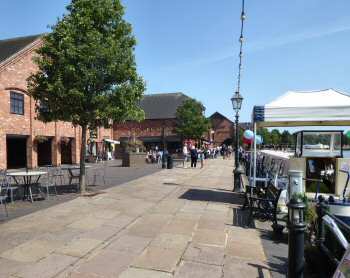
BARTON MARINA
Barton Marina is linked to the Trent and Mersey Canal and offers berths for over 300 narrow boats. The marina forms part of an 85-acre National Forest woodland site that you can explore at your leisure. There are two lakes and a network of footpaths, one leading the short distance to Barton-under-Needwood.
Before 1994, the site was used to grow crops and graze cattle. Then, over the next three years, one million tonnes of sand and gravel were excavated to create the marina and two fishing lakes. In 2001 the Marina opened for business and soon became a popular visitor attraction.
Apart from exploring the good quality shops and cafes on site all built in the same Victorian warehouse-style as the Waterfront public house using reclaimed timber and brick. If you want something different visit the Red Carpet Cinema and Café Bar. It is a great place to relax where the luxury cinema shows a wide range of films including new releases.


BLITHFIELD HALL
Blithfield Hall stands in beautiful rolling parkland in the Blythe Valley. It is a Grade I listed building and is one of Staffordshire’s most important historic listed buildings. Close by is the Grade I listed medieval Church of St Leonard, which holds several memorials to the Bagot family who lived at the hall for generations. Flanking the drive to Blithfield Hall are the Admaston Lodges, rescued from dereliction in 1985 and sensitively extended and converted into dwellings, known as Friary Lodge and Bagot Lodge.
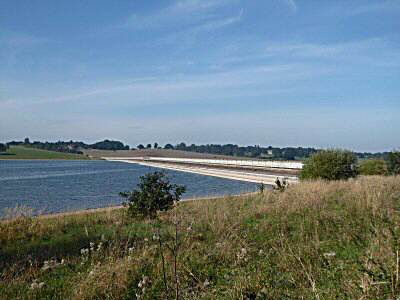
In 1985, the hall stables were converted into separate accommodation and three years later work began on dividing the hall into houses. Lady Bagot still resided at the property at the time.
The Bagot goat has lived semi-wild for several hundred years at Blithfield Hall. It was officially considered a ‘critically endangered species’ in 2010 as fewer than 100 registered breeding females in the United Kingdom. The situation has slightly improved and the grading changed to ‘vulnerable.’
BLITHFIELD RESERVOIR
It was originally planned to build the reservoir in 1939, but the Second World War intervened. Eventually, work started in 1947 and it took six years to build. The Queen Mother declared it open in October 1953. Today, it provides up to 100 million litres of water daily to more than half a million houses and businesses in parts of the Black Country, East and South Staffordshire and South Derbyshire.
Visitors to the reservoir can enjoy a relaxing walk or go bird-watching. The area was designated in 1987 as one of national importance as a habitat for wildfowl. Fishing and sailing also take place in the reservoir. The village of Abbots Bromley is nearby where you can get refreshments if you have not brought a picnic.
